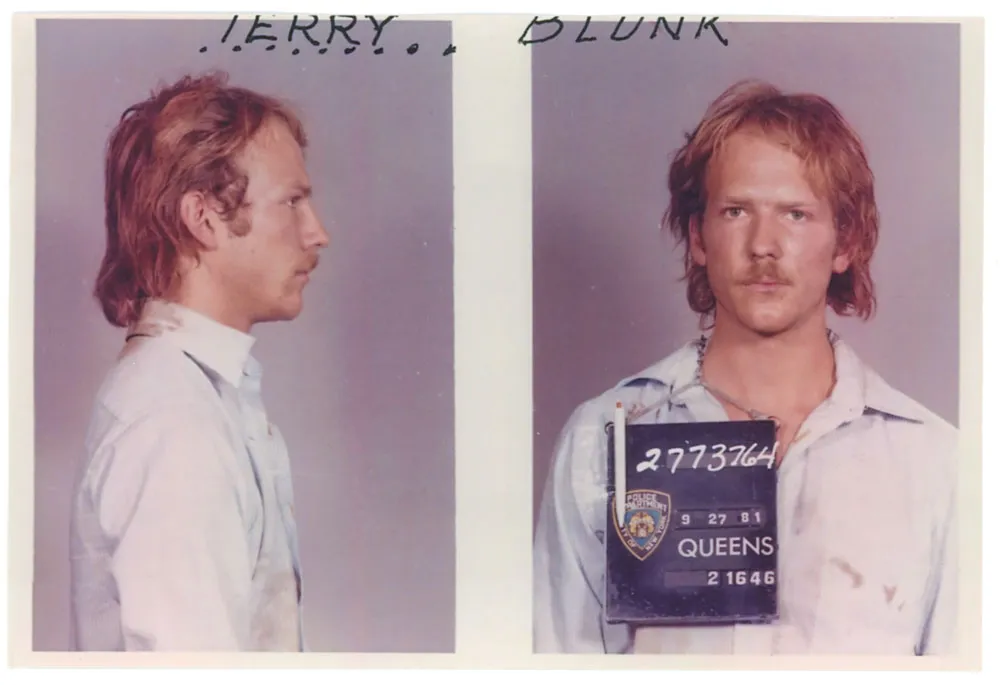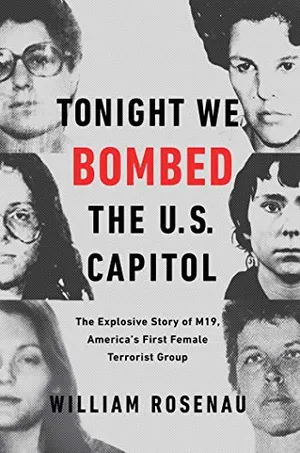In the 1980s, a Far-Left, Female-Led Domestic Terrorism Group Bombed the U.S. Capitol
Historian William Rosenau investigates the May 19th Communist Organization in a new book about the little-known militant group
:focal(259x194:260x195)/https://tf-cmsv2-smithsonianmag-media.s3.amazonaws.com/filer/5b/d1/5bd10ed9-59af-4d66-8a23-2bb6c2985052/m19-capitol-opener.png)
Amidst the social and political turmoil of the 1970s, a handful of women—among them a onetime Barnard student, a Texas sorority sister, the daughter of a former communist journalist—joined and became leaders of the May 19th Communist Organization. Named to honor the shared birthday of civil rights icon Malcolm X and Vietnamese leader Ho Chi Minh, M19 took its belief in “revolutionary anti-imperialism” to violent extremes: It is “the first and only women-created and women-led terrorist group,” says national security expert and historian William Rosenau.
M19’s status as an “incredible outlier” from male-led terrorist organizations prompted Rosenau, an international security fellow at the think tank New America, to excavate the inner workings of the secretive and short-lived militant group. The resulting book, Tonight We Bombed the Capitol, pieces together the unfamiliar story of “a group of essentially middle-class, well educated, white people who made a journey essentially from anti-war and civil rights protest to terrorism,” he says.
After their formation in 1978, M19’s tactics escalated from picketing and poster-making to robbing armored trucks and abetting prison breaks. In 1979, they helped spring explosives-builder William Morales of the Puerto Rican nationalist group FALN and Black Liberation Army organizer Assata Shakur (née Joanne Chesimard) from their respective prisons. (Both Shakur and Morales remain on the FBI’s wanted lists for terrorism and are thought to live in Cuba.)
Eventually, M19 turned to building explosives themselves. Just before 11 p.m. on November 7, 1983, they called the U.S. Capitol switchboard and warned them to evacuate the building. Ten minutes later, a bomb detonated in the building’s north wing, harming no one but blasting a 15-foot gash in a wall and causing $1 million in damage. Over the course of a 20-month span in 1983 and 1984, M19 also bombed an FBI office, the Israel Aircraft Industries building, and the South African consulate in New York, D.C.’s Fort McNair and Navy Yard (which they hit twice.) The attacks tended to follow a similar pattern: a warning call to clear the area, an explosion, a pre-recorded message to media railing against U.S. imperialism or the war machine under various organizational aliases (never using the name M19).
/https://tf-cmsv2-smithsonianmag-media.s3.amazonaws.com/filer/85/24/85241647-0f26-4356-b15d-533a4ff12739/tonightwebombedtheuscapitol_to_2_susanrosenberg.jpg)
Who were these domestic terrorists sought by the FBI? Rosenau writes of “self-described ‘corn-fed girl’” Linda Sue Evans, whose politics took a radical turn while attending Michigan State University in the midst of the Vietnam War. Many M19 members’ stories echo Linda’s—college activism (at schools including Cornell, Berkeley, Radcliffe and Hampshire College) shaped their far-left worldviews, and for some, their status as out lesbians put them at odds with a heteronormative, patriarchal society.
M19 membership typically followed involvement with other far-left groups. New Yorker Susan Rosenberg, one of M19’s earliest members, traveled to Cuba with the Castro-friendly Venceremos Brigade, and Italian-born Silvia Baraldini was part of a front for the militant Weather Underground. Along with several others, Alan Berkman, a Columbia-trained doctor who was one of the few men in the M19 inner circle, was involved with the John Brown Anti-Klan Committee.

As M19’s spree turned more and more violent, M19’s members became evermore insular and paranoid, nearly cultish, living communally and rotating through aliases and disguises until, in 1985, law enforcement captured the group’s most devoted lieutenants. After that, Rosenau writes, “The far-left terrorist project that began with the Weathermen … and continued into the mid-1980s with May 19th ended in abject failure.”
Tonight We Bombed the U.S. Capitol
In a shocking, never-before-told story from the vaults of American history, Tonight We Bombed the US Capitol takes a close look at the explosive hidden history of M19 and their violent fight against racism, sexism, and what they viewed as Ronald Reagan’s imperialistic vision for America.
Smithsonian magazine asked Rosenau about the left-wing extremist group, his research process and how this case study of domestic terrorism is relevant today.
Where would you position M19 relative to groups that people may be more familiar with, like the Weather Underground?
They are sort of an offshoot of the Weather Underground, which essentially cracked up in the mid 1980s. These women decided to continue the armed struggle. Many of them had been in the Weather Underground, but they thought the Weather Underground had made important ideological mistakes, that the Weather Underground saw itself as a vanguard of revolution, when in fact the real revolutions were going on in the third world. Or in the United States itself, in places like Puerto Rico or among Native Americans.
But the real revolutionaries were these third-world freedom fighters. And it should be the job of North American anti-imperialists, as they called themselves, to support those liberation movements in whatever way they could. So if that meant bombing the Navy to protest the role of the United States in Central America in the early 1980s, they would do that. If it meant attacking the South African consulate in New York that represented the apartheid regime [which they did in September 1984], they would do that.
They really saw themselves as being as supporters and followers of these third-world struggles in the Middle East, in southern Africa and in this hemisphere particularly. They talked about themselves as being in the belly of the beast, being at the center of this imperialist monster. So they had a particular responsibility, in their view, to carry out actions to bring this monster to heel.
Given how secretive M19 was, what was your research process like?
I'm a historian by training, so I really concentrated my efforts on archives. Unlike a lot of other people who study terrorism, I really had plowed into court records. There were multiple trials involving the women and men of May 19th and fortunately those are all preserved in the Federal Records Centers, which are part of the National Archives. So I spent days going through boxes of federal court records, which have everything from transcripts to affidavits from FBI agents to grand jury testimony to evidence picked up at the various crime scenes. Those trial records were absolutely invaluable to really get inside this group.
Two of the members had donated their papers, one to Smith College and one to Columbia University Medical Center, and these were incredibly valuable—I mean everything from high school essays to photographs of trips to Vietnam in 1975 to what looks like a picture taken before a college prom, and just things like transcripts of parole hearings.
Like most terrorist groups, they tried not to leave a trail, but in fact they wound up leaving a substantial paper trail.
/https://tf-cmsv2-smithsonianmag-media.s3.amazonaws.com/filer/f8/c7/f8c78213-1434-40c9-bcd7-ef541f06f19d/tonightwebombedtheuscapitol_to_17_runningonempty1.jpg)
What surprised you the most?
Towards the tail end of their life cycle as a group, they really at least debated amongst themselves quite intensely the assassination of police officers, of prosecutors, of military officers.
And while it's true that none of their bombings killed anyone, they certainly contemplated it. From the court records, [I learned that] they had these inventories of weapons and dynamite and detonation cord and Uzi machine guns, fully automatic with sawed-off barrels. They had incredible arsenals, and I guess they would probably argue that was for self-defense. But it seems like they were at least preparing for something much more kind of apocalyptic. Fortunately, it never happened.
M19 is unique in being a woman-founded and -led terrorist organization. Did that influence its objectives or shape it in any particularly distinguishing way?
They certainly were much more feminist and pro-woman than the Weather Underground, which was notoriously misogynistic. They were acutely conscious of any kind of sexism within themselves. The liberation of women, gay people, racial minorities was much more at the forefront for them than groups like the Weather Underground. It’s important to realize they didn't really believe in so-called “bourgeois feminism,” National Organization for Women, equal pay, all that stuff. Yeah, that was all nice, but they considered that a distraction; women's liberation would actually come with political revolution.
And that was the important thing, right? That all these other things would flow when imperialism was defeated, when capitalism was defeated. Like a lot of terrorist organizations, what this future utopia would actually look like was left a bit vague. I think that's probably the big difference: their hatred of misogyny and their very self-conscious efforts to root out misogyny within their ranks.
You write, "Despite claims by Fox News and others that Antifa activists are ‘terrorists,’ their street brawling and harassment of right-wing extremists hardly rise to the level of the left-wing political violence of the 1960s, ’70s and ’80s. The same cannot be said about the Neo-Nazi and white supremacist violence." Could you talk about the parallels or lack thereof between the left-wing terrorism you write about and some of the domestic terrorism we're seeing today?
The white supremacists [today] are not obviously as structured. You do have coherent groups like Atomwaffen Division, an extremely dangerous right-wing extremist group. But one of the things they share is that ideology is extremely important to them. They have a— I wouldn't call it a coherent world view, but they have some very well-defined ideological notions about how the world works. That's very similar to May 19th and the far-left extremist groups of the ’60s and ’70s and the ’80s, that they're not crazy.
Some of them are highly intelligent and articulate. They are strategic in their thinking, meaning that they have ways, ends and means. They're careful in their plotting. The idea that somehow these right-wing extremists today are just, I don't know, pissed-off young guys who hate black people and immigrants—yeah, they are. But they also have some very poisonous ideas, which actually have pretty deep roots.
Systemic terrorism has been a deep, deep part of our history. After the Civil War, it's not just the Ku Klux Klan, but outright insurgency against Republicans in Southern states by white militias and white supremacists. One of the things I'm trying to bring forth in the book is this notion, to quote [Black nationalist leader H. Rap Brown], "Violence is as American as cherry pie." Terrorism is not an exception, a one-off, a random thing. It is deeply ingrained in our politics and society and history.
Are there places where you see flawed comparisons or where parallels can't or shouldn't be drawn?
Historical context is absolutely paramount. We kind of lump terrorism together, like groups as disparate as Students for a Democratic Society, Al Qaeda, Red Army Faction, Aum Shinrikyo, but these are all products of particular times and particular places.
For example, I don't see circumstances in which left-wing, violent extremism today becomes anywhere near as it was in the early 1970s. I just don't think the conditions exist, and it's hard to imagine those conditions developing. You had the Vietnam War, a national draft...
People talk about polarization now, but just look at the early 1970s where literally thousands of bombs were set off per year. The important thing is just to realize that there are some similarities, but these are very different periods in time and each period of time is unique.
A Note to our Readers
Smithsonian magazine participates in affiliate link advertising programs. If you purchase an item through these links, we receive a commission.
